Mangrove forest area decline
Along National Highway 1, near Nha Phu lagoon (Ninh Hoa town), there are a series of shrimp ponds and arid land strips that have been abandoned for many years. This is the result of people destroying mangrove forests to raise high-tech shrimp. Mr. Nguyen Van Mao (Ninh Ich commune, Ninh Hoa town) said that in the past, the Nha Phu lagoon was a diverse ecosystem with mangrove forests, fertile land, and abundant seafood, creating a source of livelihood for thousands of residents. From 1990 to 2000, high shrimp prices caused the shrimp farming movement to develop rapidly. People inside and outside the province rushed to destroy mangrove forests to build ponds and farms to raise shrimp. However, after about 3-4 years of strong development, due to deforestation, polluted water sources, and diseased shrimp, farmers suffered losses and stopped farming, leading to dozens of hectares of land being abandoned.
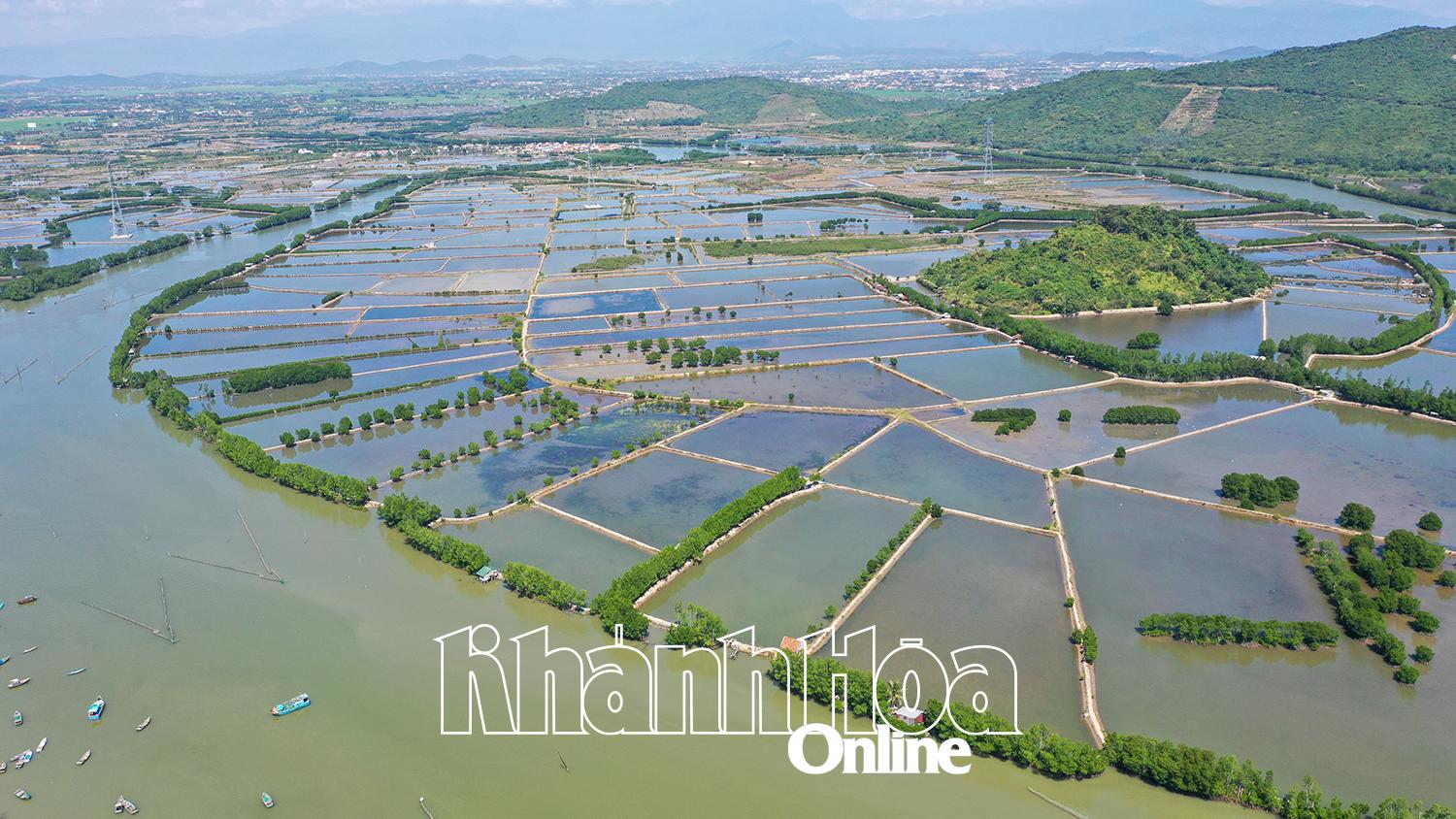 |
| Mangrove forest area along Nha Phu lagoon. |
A similar situation occurred in the Dam Bay area (Hon Tre Island, Nha Trang Bay), which used to have a unique coral reef and mangrove ecosystem. Between 1980 and 2000, deforestation and storms caused dozens of hectares of mangrove forests to decline, seriously affecting the marine ecosystem.
According to a survey by the Provincial Association for Nature and Environment and the Institute of Biotechnology and Environment (Nha Trang University), mangrove forests in the coastal areas of Khanh Hoa play an extremely important role: regulating the climate, absorbing CO₂, blocking wind, preventing coastal erosion, preventing saltwater intrusion and supporting socio -economic development through aquatic resources and tourism services. Before 2000, the whole province had nearly 3,000 hectares of mangrove forests. Up to now, only about 3.4% of the area remains, equivalent to more than 100 hectares. In the past 5 years, the consequences of deforestation for economic development have become clear: the soil has become hardened, shrimp farming productivity has decreased, and saltwater intrusion and erosion due to tides are becoming more and more serious. In localities such as Ninh Ich, Ninh Ha (Ninh Hoa town), Van Hung (Van Ninh district), many areas used to have large areas of mangrove forests and rich ecosystems, people depended on mangrove forest resources. Up to now, although most of the forest has been destroyed, there are still stretches of naturally regenerated forest with diverse ecosystems including tree species such as: Sonneratia, Aquilaria, Rhizophora, and Rhizophora.
Recovery efforts
In recent years, with the participation of local authorities at all levels, organizations and individuals inside and outside the province have joined hands to restore the mangrove ecosystem. Typically, from 2024 to present, the Women's Union of communes in emulation block No. 3 (Ninh Hoa town) planted 10,000 mangrove trees in Nha Phu lagoon; the STEAM Nha Trang group coordinated with the Women's Union of Ninh Ich commune to plant 1,000 mangrove trees and propagate to students about the value of mangrove forests in Nha Phu lagoon; volunteers who are students in the province have planted more than 11,000 mangrove trees in coastal areas in Van Ninh. The Institute of Biotechnology and Environment organized a training workshop on mangrove management and restoration for households in communes and wards with mangrove forests in Ninh Hoa town; supported a total amount of 270 million VND for 15 households to plant mangrove forests...
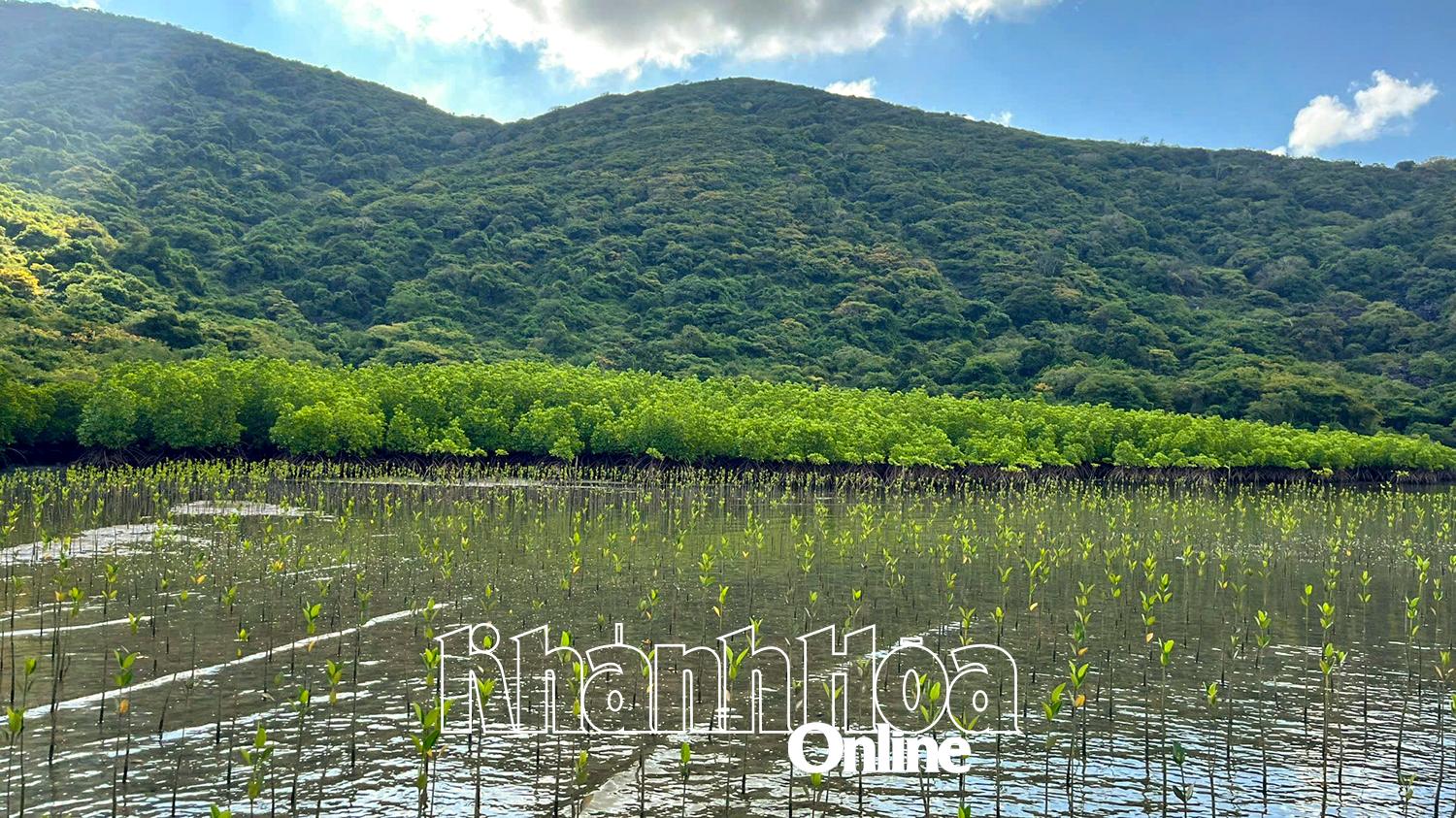 |
| Planting new mangrove forests in Dam Bay area. |
Associate Professor - Dr. Dang Thuy Binh - Institute of Biotechnology and Environment said that in recent years, some mangrove areas in the north of the province have shown signs of natural recovery in abandoned shrimp ponds, along canals, estuaries, and streams. Many businesses and local people have actively planted and protected, thereby increasing the forest area somewhat. Although the recovery area is still limited compared to before, it is a positive sign showing the change in awareness and action of the community.
According to Mr. Dam Hai Van - Head of Nha Trang Bay Management Board, from 2012 to present, the management board has coordinated with units and universities to implement activities to regenerate resources and plant new mangrove forests. The forest area in Dam Bay has increased from 5.4 hectares (in 2015) to about 8 hectares. Recently, the management board has coordinated with businesses and individuals to install buoys and warning signs "Protection area of aquatic species and mangrove forests, no exploitation". Currently, Dam Bay is planned to restore and expand the mangrove forest area, aiming to exploit and develop eco-tourism in harmony with nature. Along with propaganda work, Nha Trang Bay Management Board is strengthening coordination with functional forces and Border Guards to patrol and handle cases of violations affecting Dam Bay.
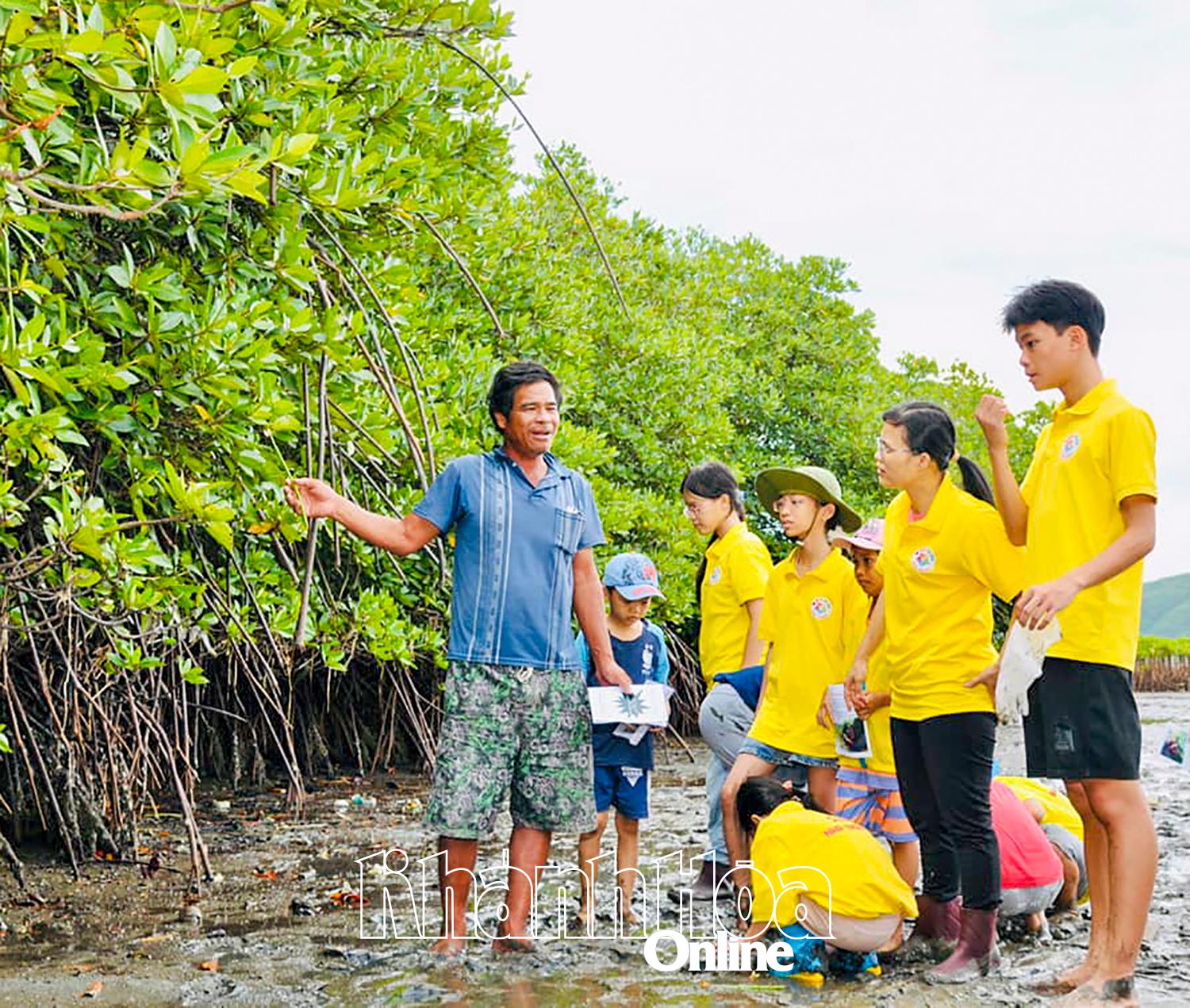 |
| Students are educated about the benefits and responsibilities of protecting mangrove forests along Nha Phu lagoon. |
To protect and restore mangrove forests, according to Associate Professor - Dr. Dang Thuy Binh, in the coming time, it is necessary to review and supplement planning in coastal localities; plan at least 500 hectares of mangrove forests for the entire region; strengthen monitoring and protection of the entire existing forest area; develop annual forest planting plans, mobilize social resources and international organizations; improve coastal pollution, control discharge into the marine environment; support seedlings for people to plant and care for forests. For aquaculture cage areas, it is necessary to mobilize businesses and people to actively participate in planting mangrove forests.
According to the leader of the Department of Agriculture and Environment, in recent times, the department has advised the Provincial People's Committee to issue many specific mechanisms and policies in the management, protection and development of forests, including mangrove forests. In the period of 2021 - 2030, the sector has directed its affiliated units to manage mangrove forests in conjunction with forestry planning; comprehensively assess the current status of forests (area, reserves, flora, impacts, etc.); improve capacity for specialized management agencies; develop mangrove forests according to an ecological approach, focusing on the community. These policies are expected to contribute to increasing the area of mangrove forests, increasing forest cover, increasing the ability to prevent and combat natural disasters, adapt to climate change and rising sea levels, and mitigate natural disasters in the province.
Currently, the province has 48.23 hectares of mangrove forests in Cam Lam district, Ninh Hoa town, Nha Trang city... In addition, the province also has nearly 1,722 hectares of coastal forests with the functions of wind protection, sand protection, wave protection, and sea encroachment.
THAI THINH
Source: https://baokhanhhoa.vn/xa-hoi/202505/hoi-sinh-rung-ngap-man-92954f2/




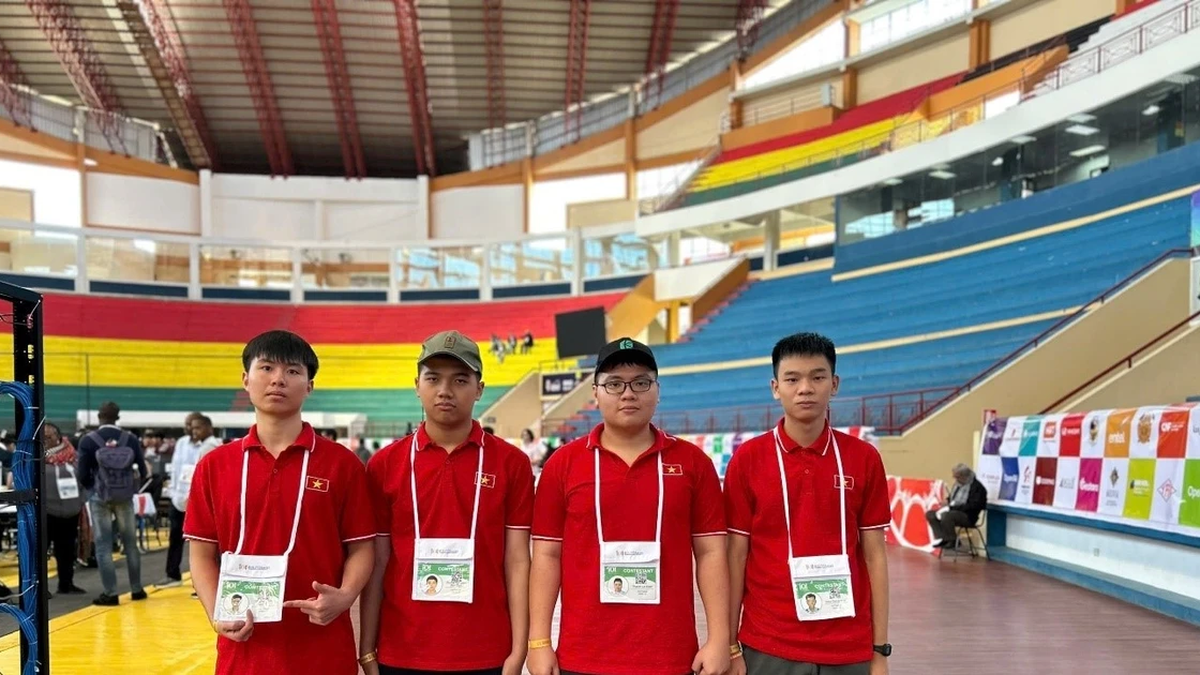

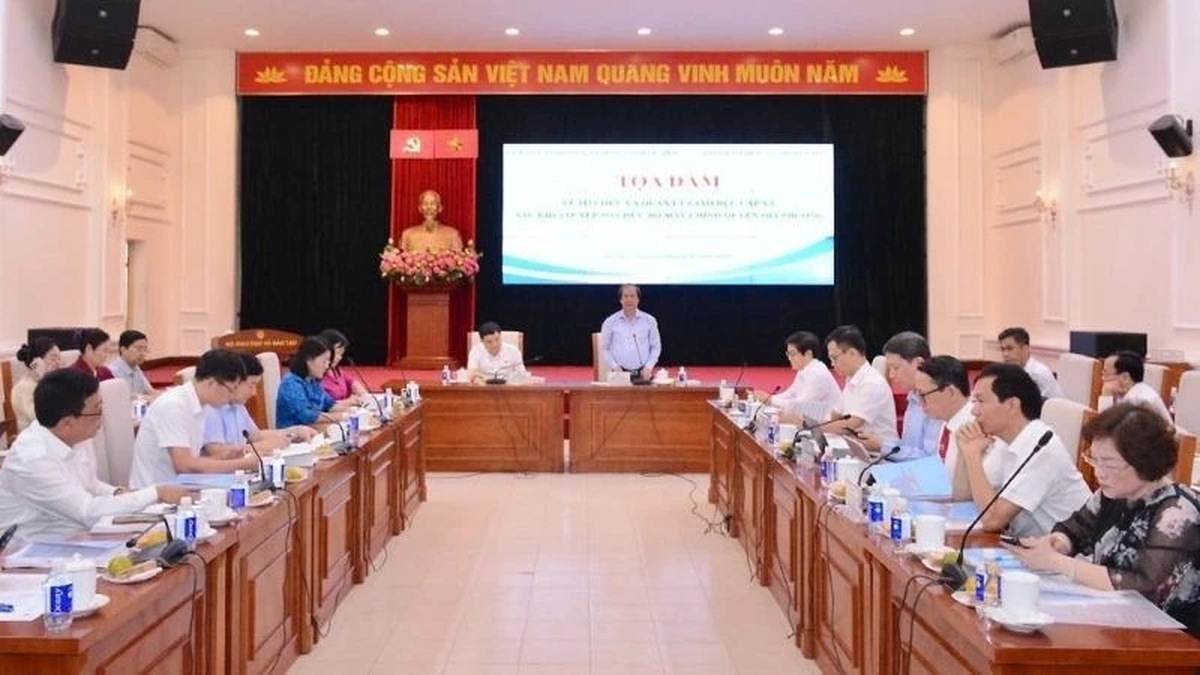
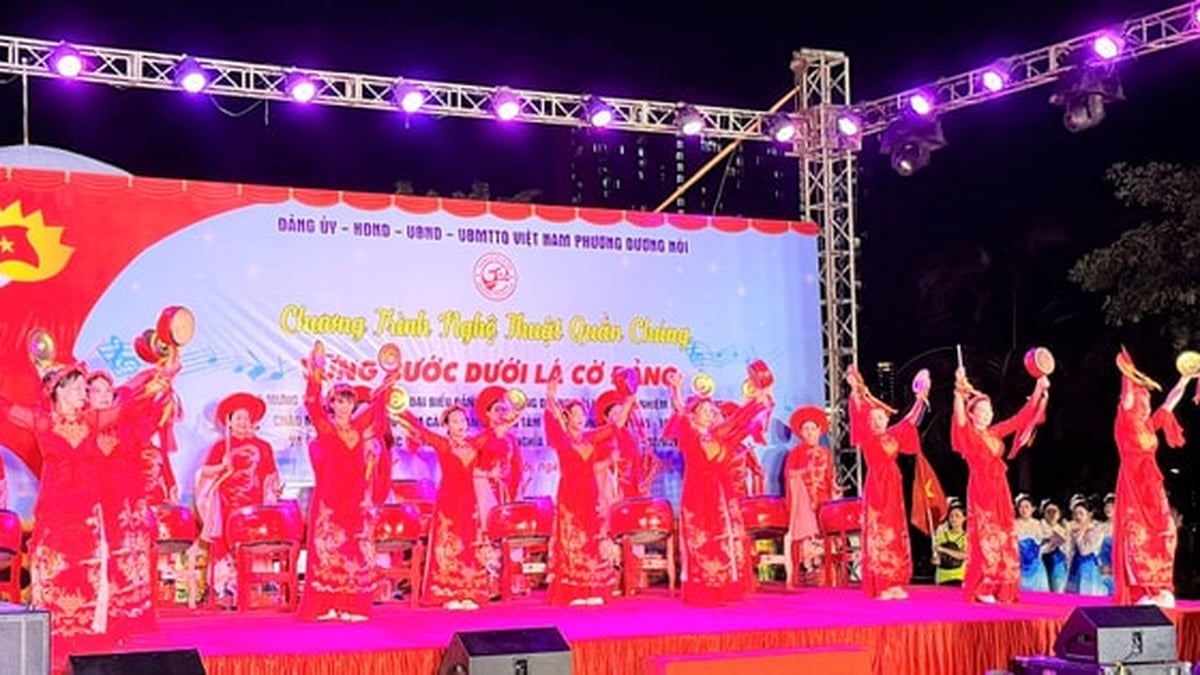


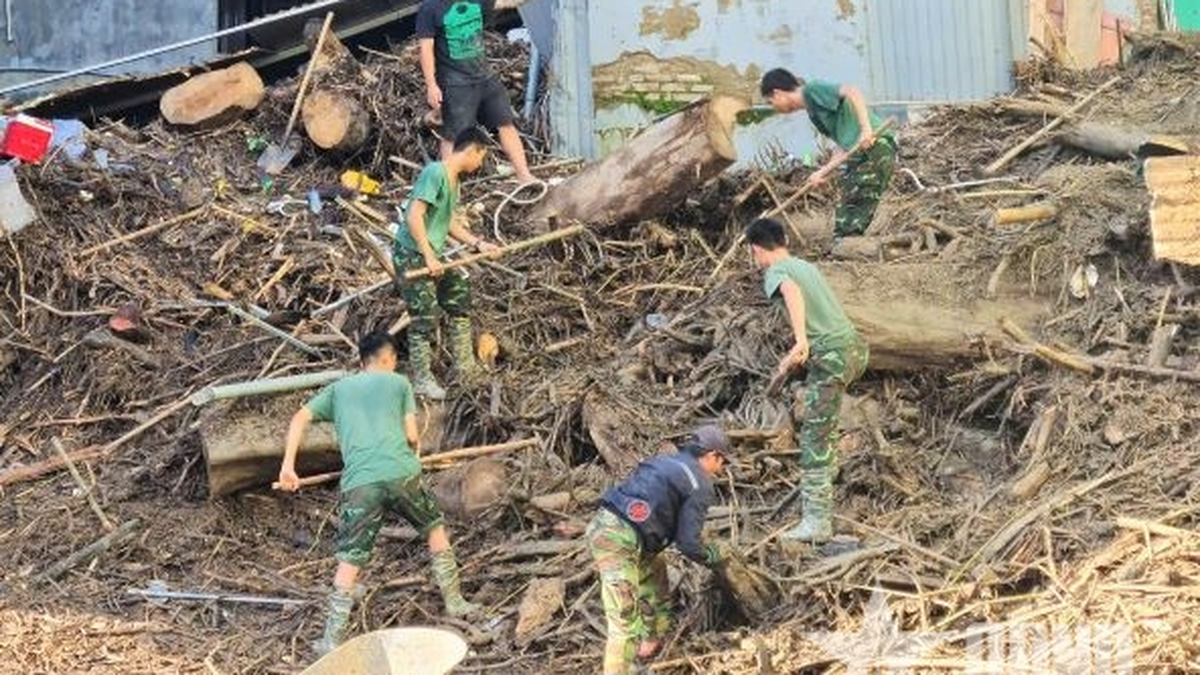






















































































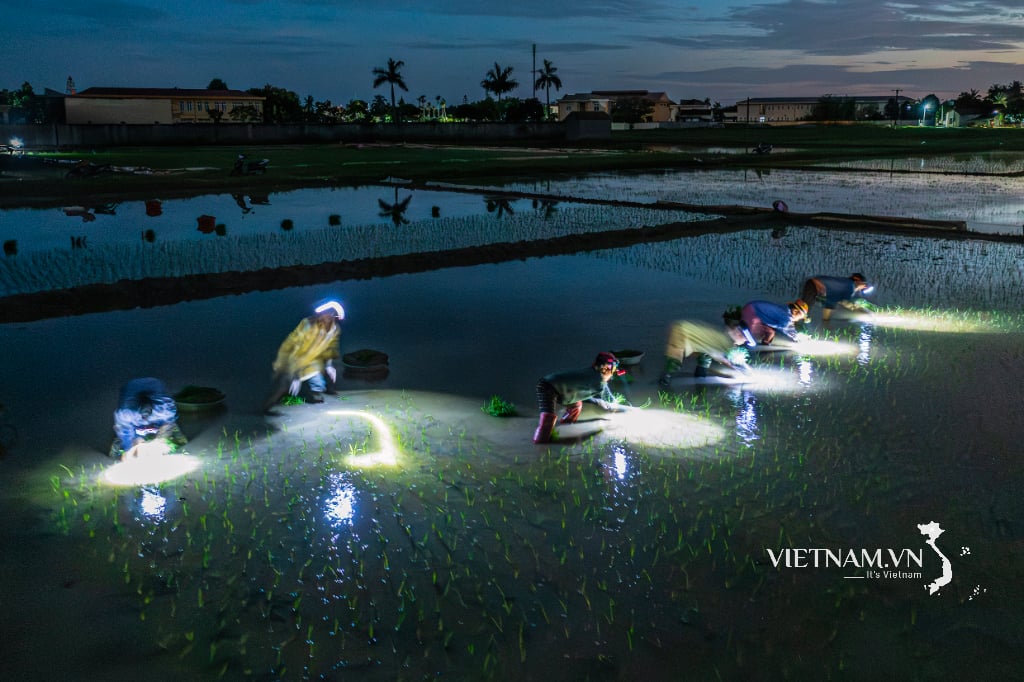

Comment (0)